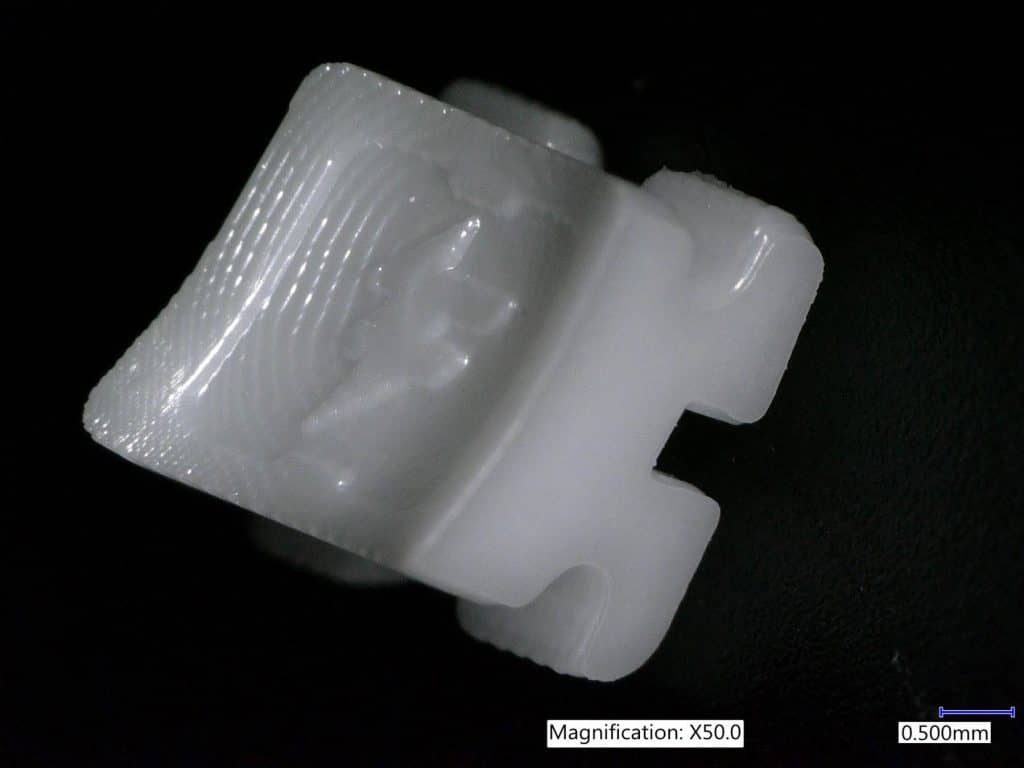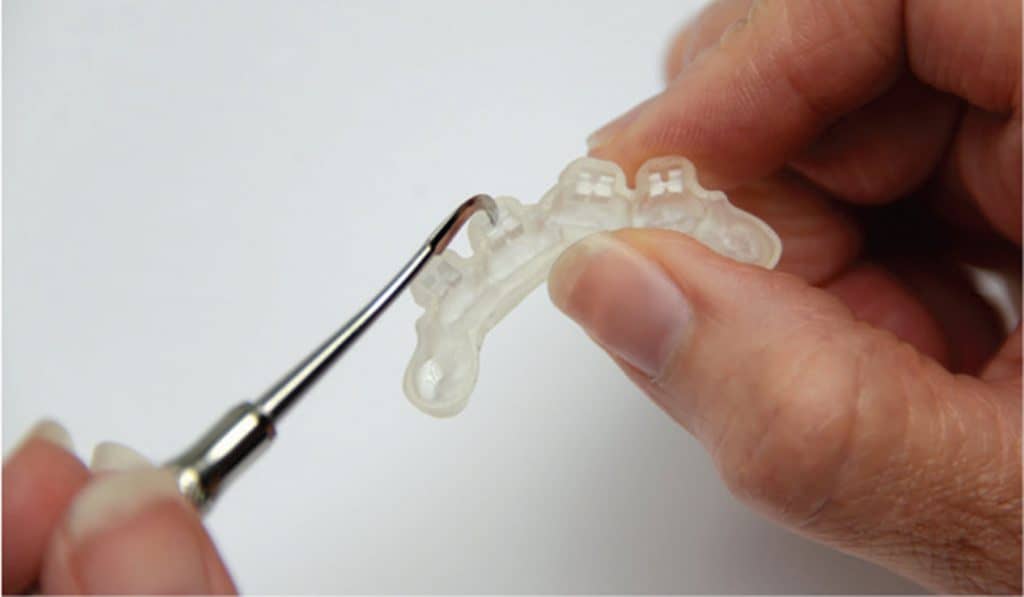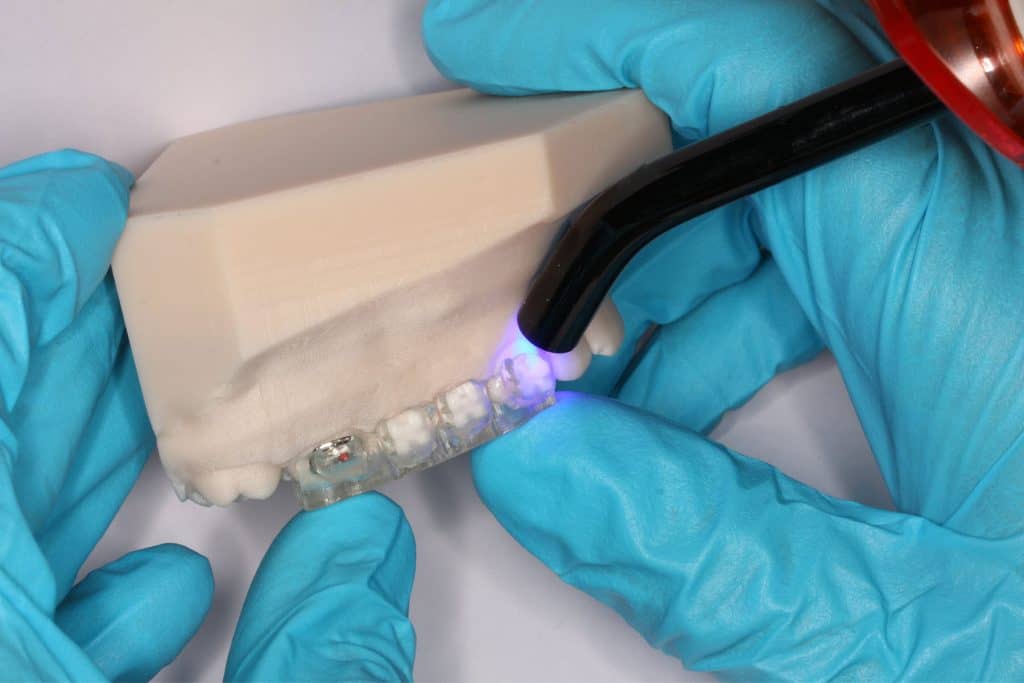By Kip Hanson
Advanced engineering software is being used to design and optimize a range of 3D-printed products, from rocket engines, drones, and tennis shoes to brake pedals for Formula 1 race cars and parts for Airbus, Lockheed Martin, and U.S. Air Force planes.
Now add LightForce Orthodontics‘ advanced bonding trays for brackets to the list.
“We are strong in the majority of industries and applications, but particularly so where there are families of parts involved,” says Christopher Cho of nTopology, a leading computational modeling software company. “That’s when our automated workflows really shine, potentially saving engineering departments hundreds of hours and accommodating tens or even hundreds of product variants.”
In the life sciences, nTopology has identified numerous opportunities with medical device manufacturers—companies that wish to reduce the development efforts needed for bespoke hip implants, knee replacements, spinal components, and more. “Each one of the parts within these product families is similar in size and shape but, for the best results, is often customized to fit a specific patient,” Cho adds.

Optimized orthodontics
Many orthodontists struggle with indirect bonding trays and LightForce Orthodontics saw an opportunity. It was the capability for customization, as well as automated design optimization, that attracted them to nTopology’s nTop Platform software, which helped the LightForce engineering team cut its design time in half for the indirect bonding trays they use to mount their bracket system—that’s according to Amos Benninga, the company’s vice-president of engineering.
The Cambridge, Mass, startup produces “the world’s only fully-customized, 3D-printed bracket system,” says Benninga. The starting point is an intraoral scan of the patient. From that scan a digital 3D model is produced which is then used to 3D print custom ceramic brackets and a polymer tray to precisely align them. The LightForce indirect bonding system means far less chair time and discomfort for patients—a reduction in the length of the bonding appointment from 90 to 30 minutes in some cases.
What makes the LightForce bracket system unique is that it is fully customized to the individual patient’s tooth anatomy. This customization to the individual anatomy creates a system that significantly decreases the number of needed wire-bending appointments over the course of treatment, and it eliminates the need to stock brackets as part of the practice’s inventory.
Today, about 15% of orthodontic case starts are treated with “customized” clear aligners, leaving 85% of the orthodontic cases without a “customized” option. The LightForce system allows orthodontists to apply digital efficiencies to that remaining 85%, who are better served with a wire moving their teeth, giving them a custom 3D-printed bracket option.

Scaling up brings design time way down
With nTop Platform, LightForce Orthodontics now is able to complete the pre-installation patient-customization part of the manufacturing process in “around 3 hours”—down from the 8 to 10 hours previously required, Benninga says. “It’s also a lot easier. Before, we were using a CAD tool that was not prescriptive and allowed freeform operations,” he says. “It was difficult to keep track of the steps you still needed to do versus the ones you’d already completed; and if you made a mistake, you may have had to start over. It was also more difficult to find people able to learn the process, which, for a growing company like ours, was becoming a real obstacle.”
Benninga says nTop Platform changed all this. Thanks to its integrated workflow capabilities, he found the software very “prescriptive,” in that it outlines the various steps needed to complete tray designs in an easy to understand manner. He has also found that the models created with nTop Platform are “unbreakable.” Technicians can quickly scale, rotate, offset, and perform other standard CAD functions without worrying about the model’s geometric integrity, a refreshing change from other software packages Benninga has used. And because the platform is both intuitive and easy to use, training people is much less challenging. According to Benninga, “The models are better. We save a tremendous amount of time on the design process, and we’re able to bring new people up to speed very quickly.”
LightForce Orthodontics’ now-digital process is about to become even faster. Benninga is working with nTopology software engineers to implement a command-line interface, or CLI, that will one day serve to eliminate much of the manual work. “Our goal is to enter a series of values and have the software automatically calculate the optimal geometry,” he says. “That would allow us to bring our design and validation time from around 3 hours down to perhaps 10 minutes, an achievement that would be a game-changer for our company.”

A connection to other types of manufacturing
There’s an interesting parallel between braces and the jigs and fixtures that are used in a wide range of industrial applications. “The tiny blocks and 3D-printed trays used to hold them are quite similar to many industrial workholding devices, albeit on a smaller scale,” says Cho.
Benninga agrees, seeing direct parallels between his company’s methodology and what is done every day in general manufacturing. “Jigs are tools to help you achieve what you want to achieve,” he says. “Looked at this way, our tray system is basically a jig.”
By availing itself of the latest advanced manufacturing software with nTop Platform, LightForce is able to optimize its 3D printing workflow, benefiting from the same integrated workflows, implicit modeling, and unbreakable CAD geometries that manufacturers in other industries use in their engineering workflows. The end result is that LightForce is able to more efficiently and quickly produce a bespoke option for today’s orthodontic patient. OP
Kip Hanson is a writer and manufacturing consultant with over 30 years in manufacturing and business management.





